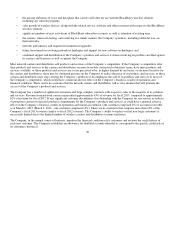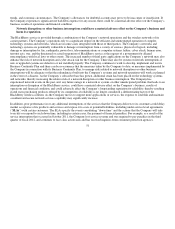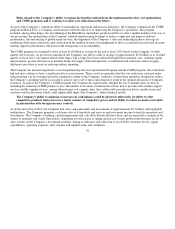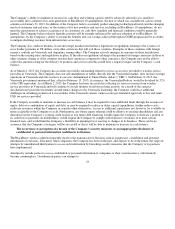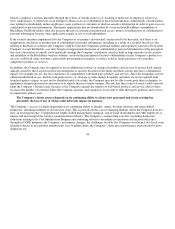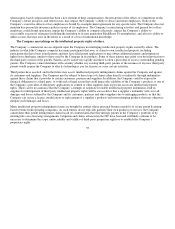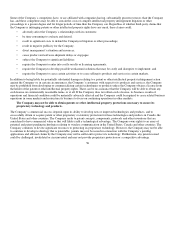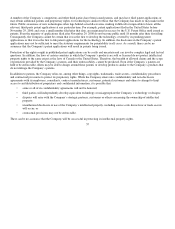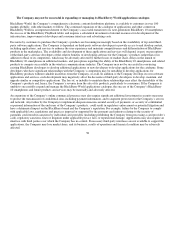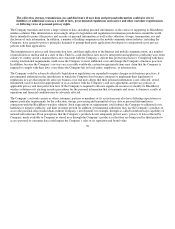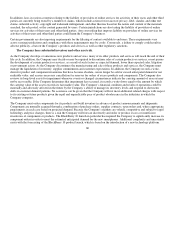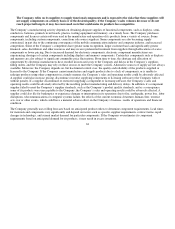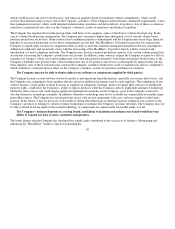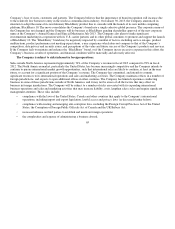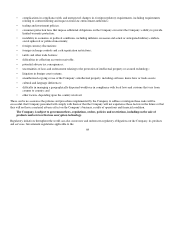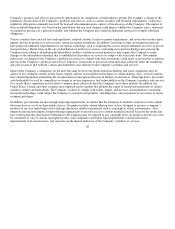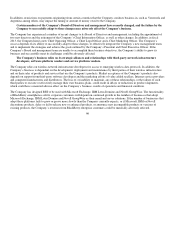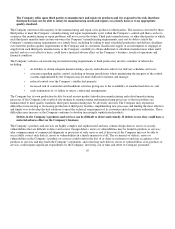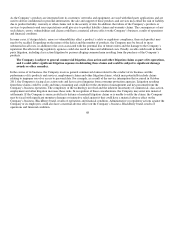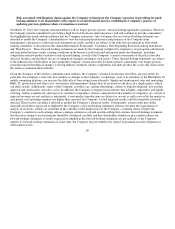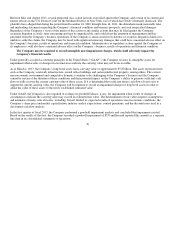Blackberry 2013 Annual Report Download - page 67
Download and view the complete annual report
Please find page 67 of the 2013 Blackberry annual report below. You can navigate through the pages in the report by either clicking on the pages listed below, or by using the keyword search tool below to find specific information within the annual report.
In addition, laws in various countries relating to the liability of providers of online services for activities of their users and other third
parties are currently being tested by a number of claims, which include actions for invasion of privacy, libel, slander, and other tort
claims, unlawful activity, copyright and trademark infringement, and other theories based on the nature and content of the materials
searched, the ads posted, or the content generated by users. Certain jurisdictions are also testing the liability of providers of online
services for activities of their users and other third parties. Any court ruling that imposes liability on providers of online services for
activities of their users and other third parties could harm the Company’s business.
Certain governments are also imposing requirements for the filtering of content available to end users. These requirements vary
across varying jurisdictions and compliance with these requirements may be costly. Conversely, a failure to comply could result in
adverse publicity, a ban on the Company’s products and services as well as other regulatory sanctions.
The Company faces substantial inventory and other asset risk.
As the Company develops or announces new products and services, many of its older products and services will reach the end of their
life cycle. In addition, the Company may decide or may be required to discontinue sales of certain products or services, or not pursue
the development of certain products or services, as a result of such factors as expected demand, lower than expected sales, litigation
or government action. As the Company discontinues the manufacturing and sale of these products and services, the Company must
manage the liquidation of inventory, supplier commitments and customer expectations. In addition, the Company records a write-
down for product and component inventories that have become obsolete, can no longer be sold or exceed anticipated demand or net
realizable value, and accrues necessary cancellation fee reserves for orders of excess products and components. The Company also
reviews its long-lived assets for impairment whenever events or changed circumstances indicate the carrying amount of an asset may
not be recoverable. If the Company determines that impairment has occurred, it records a write-down equal to the amount by which
the carrying value of the assets exceeds its fair market value. The Company’s financial condition and results of operations could be
materially and adversely affected in the future by the Company’s ability to manage its inventory levels and respond to short-term
shifts in customer demand patterns. No assurance can be given that the Company will not incur additional related charges with respect
to its existing or future products given the rapid and unpredictable pace of product obsolescence in the industries in which the
Company competes.
The Company must order components for its products and build inventory in advance of product announcements and shipments.
Components are normally acquired through a combination of purchase orders, supplier contracts, open orders and, where appropriate,
prepayments, in each case based on projected demand. Because the Company’s markets are volatile, competitive and subject to rapid
technology and price changes, there is a risk the Company will forecast incorrectly and order or produce excess or insufficient
inventories of components or products. The BlackBerry 10 launch in particular has required the Company to significantly increase its
component orders in order to meet the estimated anticipated demand for the new smartphones. Additional complexity and uncertainty
exists with the forecasting of the BlackBerry 10 product launch, which is based on the introduction of a new technology platform.
60


